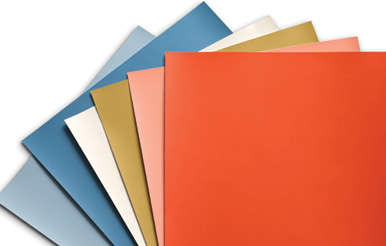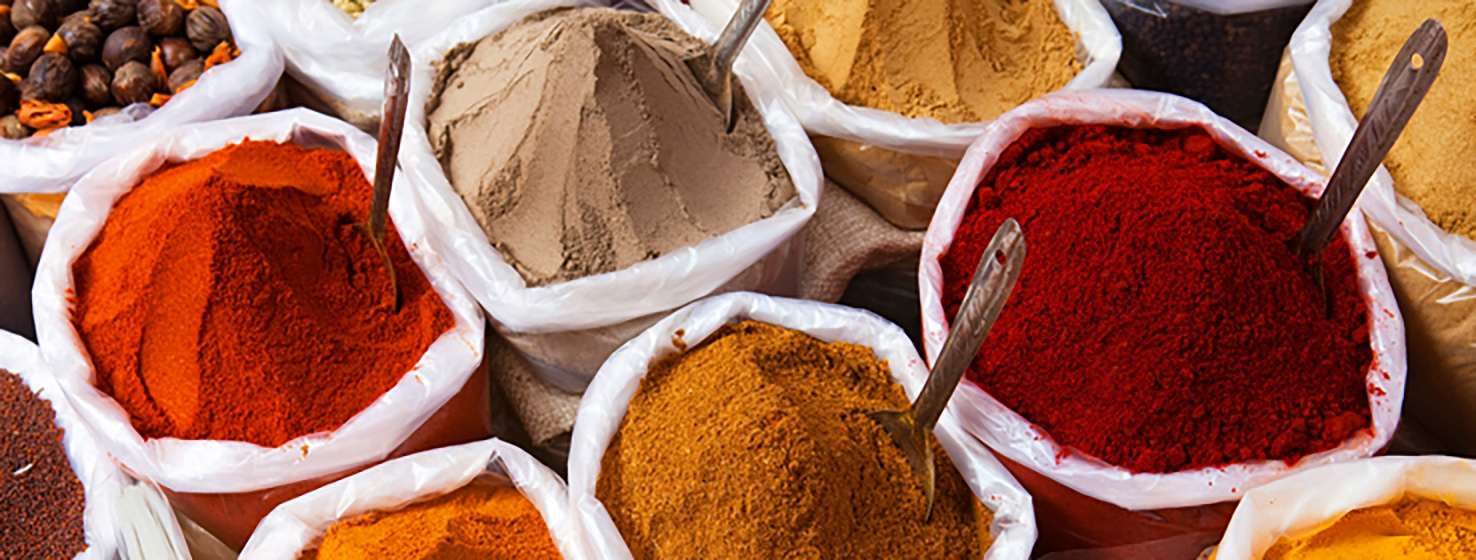Spices and paint color — pigment — have an ancient, shared history. Understanding this relationship can help you make more inspired design decisions.
By Amanda Lecky
If you’ve ever been inspired by the rich red of cayenne or the intense gold of curry while cooking, you’ve reacted to the natural pigments found in spices. In fact, it turns out that when it comes to color, spices and paint share an ancient history.
The chemical compounds that give spices their vibrant colors tend to fall into several categories, including chlorophylls, the greenish pigments that all plants contain; carotenoids, the red, orange or yellow pigments that give paprika, saffron and turmeric their brilliant hues; and flavonoids, the yellow pigment found in cassia cinnamon, for example.
Plants use these different natural pigments to help capture the energy of sunlight for photosynthesis and to attract insects and animals to aid pollination and seed dispersal. And for centuries, humans have also adopted natural pigments — many of them derived from the same spices they used for their native cuisine — to add vibrant organic color to their surroundings. The paint used in 50,000-year-old Persian cave art contained saffron, just as classic Persian “Jeweled Rice” does. And the same turmeric cooked into a Tibetan curry also gave Buddhist monks’ robes their golden hue.
Today’s synthetic pigments have made it easier to surround ourselves with these earthy hues — and tap into our instinctual appetites for color.
“Spice tones create in us a very visceral connection to color. They’re rooted and anchored, they come from the soil — which is very comforting,” says Sue Wadden, Director of Color Marketing for Sherwin-Williams. “Of course, if they’re bright — like a cayenne-pepper red — these colors can be stimulating, so you have to decide what kind of effect you want when you’re deciding where to use them.”
Where to feature spicy shades
Wadden says that their culinary origins make spicy shades a natural choice for kitchens and living spaces — on all four walls, or as an accent wall. For clients who want to be surrounded by rich color, try spice-based colors in the bedroom or office. “But not all spice tones work well in a bathroom,” she says. “Red-based shades can alter our color experience, so if you’re looking at yourself in the mirror you might not get an accurate picture.”
Mix your spicy palette with neutrals — warm shades from ecru to khaki — or cool ones like steely gray or crisp white. Or, “mix in some soft blues and greens to help balance all the warmth,” Wadden says. When picking your paint finish, Wadden suggests you try matte, for a tactile, velvety effect.
“I love matte finishes,” Wadden says. “They help hide surface imperfections in a wall because light doesn’t reflect off the high points — which is great if your client has an older house with bumpy walls. And premium matte finishes like Duration Home® Interior Acrylic Latex Paint are very washable.”
For even more texture, she suggests incorporating natural materials. “Spice tones pair so well with exposed brick, stone and wood,” she says.
A benefit to working with spice colors is they tend to exist outside of trends. “Spices and spice colors have been around forever. This is one palette that’s about as timeless as you can get,“ Wadden says.
Try these spice-inspired Sherwin-Williams colors

Curry SW 6671 (132-C7)

Peppery SW 6615 (117-C6)

Garden Spot SW 6432 (155-C6)

Cavern Clay SW 7701 (290-C6)

Saffron Thread SW 6663 (123-C6)
Photosynthetic Pigments.
http://www.ucmp.berkeley.edu/glossary/gloss3/pigments.html.
Lee, David Webster. Nature's Palette: The Science of Plant Color. Google Books, 2007.
"The Chemistry of Food Colorings." American Chemical Society.
https://www.acs.org/content/acs/en/education/resources/highschool/chemmatters/past-issues/2015-2016/october-2015/food-colorings.html.
Avey, Tori. "What is the History of Turmeric?" PBS. March 09, 2015. http://www.pbs.org/food/the-history-kitchen/turmeric-history/.
Williar, P. Secrets of Saffron: The Vagabond Life of the World’s Most Seductive Spice. Beacon Press, 2002.
Yusuf, Mohd, Mohd Shabbir, and Faqeer Mohammad. "Natural Colorants: Historical, Processing and Sustainable Prospects." Natural Products and Bioprospecting. February 2017. https://www.ncbi.nlm.nih.gov/pmc/articles/PMC5315675/.







